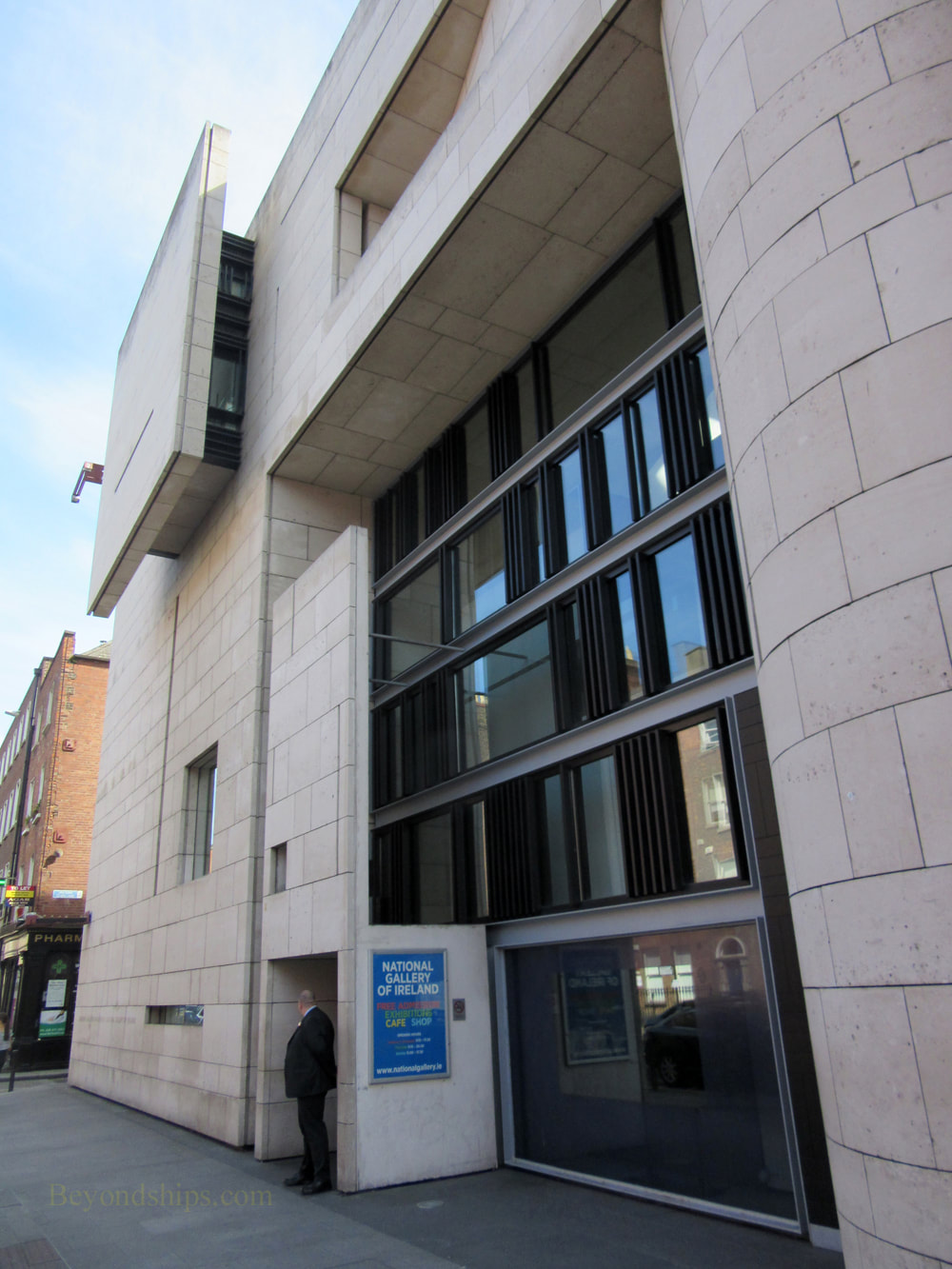|
The National Gallery of Ireland (“NGI”) exhibits the Republic of Ireland's national collection of art. Its stated objective is to make the NGI an “exciting place to encounter art.” As evidenced by the fact that it attracts hundreds of thousands of visitors each year, the NGI appears to be succeeding.
Its collection includes some 16,300 works. These are primarily Western European works dating from the 14th century to the present day. Among these are many world renown masterpieces. The NGI also has what is probably the most extensive collection of Irish art. There is also a collection of some 12,000 drawings. In addition, the NGI also acts as a national portrait gallery with the National Portrait Collection. The idea for a national gallery for Ireland grew out of the enthusiastic public response to an art exhibit at the Great Industrial Exhibition in Dublin in 1853. An act of Parliament in 1854 authorized the NGI and it opened ten years later. Unlike several other major national galleries, the NGI's collection did not spring from any one collection. Rather, the initial collection of 125 paintings were purchased. It grew by further purchases as well as by donations of art and of money including a substantial bequest from George Bernard Shaw. Located in the heart of Georgian Dublin, the NGI has entrances on both Merrion Square and Clare Street. It has four wings, which were built between 1864 and 2002 to keep pace with the growth of the collection. In style, they range from 19th century Classical to late 20th century Brutalism. However, in 2017 the two oldest wings reopened after a multi-year refurbishment, which brought the entire building up to contemporary viewing standards. Most of the better known masterpieces are exhibited on the third floor. However, there are rooms on the first floor with some Impressionist and Modern works. Befitting a national gallery, substantial space is given on the first floor to Irish art. While Irish art is not as well-known as the art from some other western European nations, there are some hidden gems here. We were particularly impressed by the works of Jack Yeats. The brother of poet W.B. Yeats and son of the portrait artist John Yeats, Jack Yeats began as an illustrator doing mostly black and white works. However, by the 1920s he had adopted color and developed a style that while still figurative was loose and expressive. In addition to displaying its permanent collection, the NGI presents temporary exhibits. While there is no admission charge for the permanent collection, there is sometimes an admission charge for the temporary exhibits. For more information about visiting, see the NGI website. For more places to see art in Dublin
Click here for our profile of the Hugh Lane Gallery Click here for our profile of the Irish Museum of Modern Art (IMMA) Click here for our profile of the Douglas Hyde Gallery For more on travel to Ireland, see our Ireland home page
Above: Diego Velazquez' Kitchen Mid at the Supper of Emmaus on disply in the Dargan wing.
|
Above: The Clare Street entrance to the Millennium wing.
ARTICLES AND REVIEWSExhibition Review: "Forgotten Faces"
Exhibition Review: "Margaret Clarke: An Independent Spirit" Exhibition Review: “Nathaniel Hone: Travels of a Landscape Artist” |
|
|
|
Places to see art - - Dublin, Ireland - - National Gallery of Ireland



